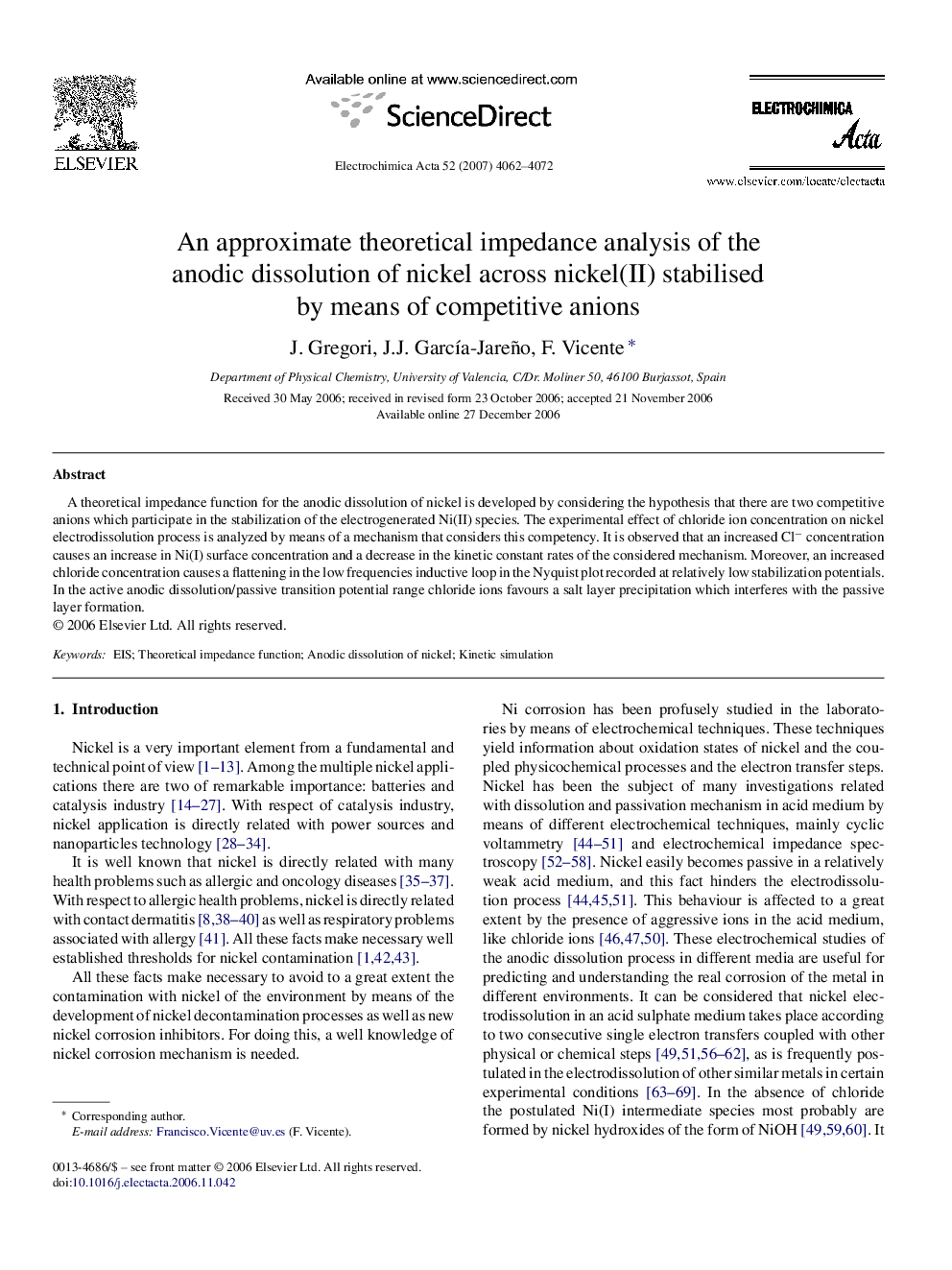| Article ID | Journal | Published Year | Pages | File Type |
|---|---|---|---|---|
| 193775 | Electrochimica Acta | 2007 | 11 Pages |
A theoretical impedance function for the anodic dissolution of nickel is developed by considering the hypothesis that there are two competitive anions which participate in the stabilization of the electrogenerated Ni(II) species. The experimental effect of chloride ion concentration on nickel electrodissolution process is analyzed by means of a mechanism that considers this competency. It is observed that an increased Cl− concentration causes an increase in Ni(I) surface concentration and a decrease in the kinetic constant rates of the considered mechanism. Moreover, an increased chloride concentration causes a flattening in the low frequencies inductive loop in the Nyquist plot recorded at relatively low stabilization potentials. In the active anodic dissolution/passive transition potential range chloride ions favours a salt layer precipitation which interferes with the passive layer formation.
